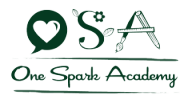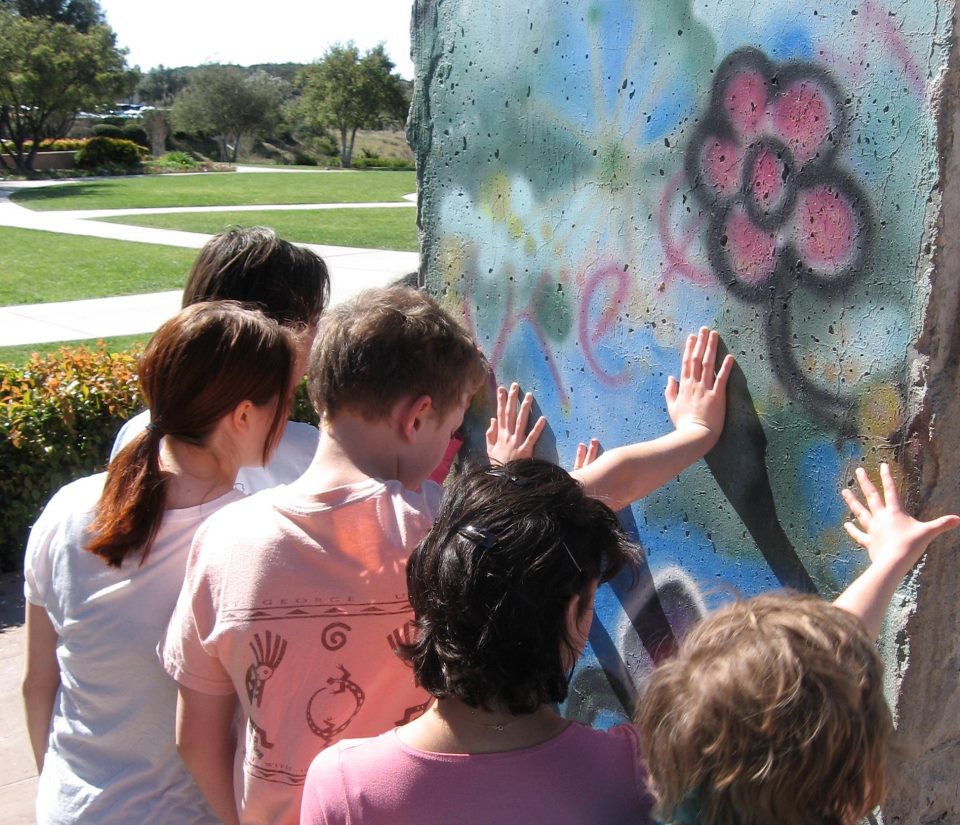The Proof of Learning
It’s that time of the year again when everyone who is involved in a public school is enduring some added stress. Yes, it’s testing time. For at least a month in most schools, many exciting activities and lessons are dropped in place of test prep, and normal schedules are in upheaval. Students have been warned to be at school on time, eat a healthy breakfast, and get plenty of sleep (as if those habits aren’t expected on any day of the week). Pages of released questions have probably been sent home, letters have gone home to families to remind them how important testing is, brains have been crammed full of information that may or may not show up on the test, and post-testing parties have likely been planned as an incentive for kids to show up each day. All of this adds up to one assumption about testing: when it comes to a year’s education, not much else seems to matter besides the outcome of these tests.
In recent weeks, a few parents whose children are enrolled in publicly-funded homeschool programs have expressed concern over whether their children are ready for testing. But, there is nothing I can do to specifically prepare students for the test, outside of providing engaging and well-planned educational classes with lessons that matter most to their growth as life-long learners, thinkers, and active participants in the real world. While the tests are important to district administrators in order to check off how well teachers are covering what they are required to, and whether students can actually remember all the information, we must keep in mind that these tests are just one small speck of assessment in the span of a long education. They don’t accurately assess the breadth of what a child knows, or doesn’t know, just as they don’t assess all that teachers do for students. They don’t do much for a child in terms of learning to learn. They don’t inspire intrinsic motivation or creativity, and they certainly don’t take the place of an engaged, active day of learning, thinking and discussion. Testing is a skill. A standardized test measures how well a student can answer myriad questions, many of which they have never seen before, in a set amount of time (and don’t let the promise of un-timed tests fool you; students will get them done quickly if taking more time means missing recess or a trip to the bathroom). Over the years I’ve seen too many hard-working students do poorly on these tests, and become deflated. I’ve also known many students who could care less about their education score at the advanced level and just feel validated for their lack of effort on all other class activities. Go figure.
I’m not saying that the tests don’t have some value. Perhaps if we didn’t put so much pressure on kids to perform well on them, testing might actually be one of many valid ways for students to share what they know. When I was in school, I don’t remember being stressed over tests, but then again, it wasn’t as crazy as it is today. If I had known my score would be published, analyzed, and perhaps determine my teacher’s perception of my trajectory in life, then I would have hated testing. In fact, I would likely have taken great pains to ensure that I didn’t take any risks in my education. I would have studied only the applicable information, to up my odds that I’d stay out of that humiliating “below basic” category. Oh, I know that schools are supposed to use the data to help target their instruction. But really, to a child, the outcome has become more like an antiquated class system, where only “advanced” levels are a badge of honor.
I’ll bet if we relaxed the issue of testing, kids would actually do better in school, take more risks in their learning (which is critical!), and enjoy the process a whole lot more. And, I’m hardly the only one critical of testing. Testing is a highly politicized money-maker in the educational system, with questions developed by people far-removed from the classroom. Yet, I know too many parents who have learned to place more value on their child’s scores than they do on an overall assessment of a year’s growth by their child’s teachers.
So, if testing as it is today is not a way to measure an education, then what is? I’d like to share about some ways in which we notice students learning at One Spark.
[image_frame style=”framed_shadow” align=”left”]https://www.onesparkacademy.org/wp-content/uploads/2012/04/onespark1-e1351885778973.jpeg[/image_frame]
In February, a group of students placed their hands on a piece of the Berlin Wall. It was a Friday, a day that many of them typically spend doing fun activities with fellow home schooled friends, or enjoy working or being at home or outdoors with their families. Instead, on this beautiful warm and sunny day, when many kids might have liked to be at the beach, they chose to be at the Reagan Library for a field trip. There was no grade attached to the trip, no credit earned. The only trade off for their time was the gift of knowledge. For this special exhibit, students experienced a wonderful journey through the world of George Washington’s life. They saw video clips of how forensic scientists made a life-size replica of Washington’s body and face, then they marveled at the actual replica of Washington atop his horse Blueskin. Young George was on exhibit as an 18-year old surveyor, then as he was sworn in, and at Valley Forge. Washington’s fake teeth, his handwriting in books, Martha’s dress, a scaled model of Mt. Vernon– all were on display for visitors to experience. After the tour, the students walked to the gravesite of Ronald Reagan, discussed the Presidential Seal, and then placed their hands on a piece of the Berlin Wall. For those who live in Ventura County, a trip to the Ronald Reagan library is probably not an uncommon experience, but in the scope of lessons that matter, it was an example of active, engaged learning at its best.
[image_frame style=”framed_shadow” align=”left”]https://www.onesparkacademy.org/wp-content/uploads/2012/04/img_3291.jpg[/image_frame]
Back at the Teen Center, around the same time, our Portraiture art class was finishing up. Over eight weeks, student artists had masterfully scaled a photograph of their own faces onto canvas, after it had been covered with newsprint. They did this by drawing equidistant rectangles on both the photo and the canvas, and then transposed the image from the photo onto the canvas. Once the image was transferred, layers of pastel were used to bring the portrait alive. Each week, students immersed themselves into the peacefulness of their art class and enjoyed a distraction-free space in which to create. There would be no outside assessment of this final product. The trade-off would be a gift of one’s creativity, passion, and talent to hang on the family room wall, something to last for years. One might think, well it’s easy to get kids to be in an art class without having a grade. Art is fun! No tests are needed to assess how well someone can learn an art technique, since the proof is in the pudding. Right?
The common assumption is that we need tests to prove, for example, that a child read the required information and researched what they were supposed to. Many believe that if there’s no grade and no incentive, why on Earth would students be compelled to do a research project, prepare for a presentation, and then come speak to their class?
[image_frame style=”framed_shadow”]https://www.onesparkacademy.org/wp-content/uploads/2012/04/img_3323.jpg[/image_frame]
If you don’t believe that students will learn for the sake of knowledge and participation, and not care about whether or not they are graded, then you haven’t met Emerson. When it comes to history, Emerson is as brilliant and motivated as they come. His thirst for stories and his ability to memorize information goes far behind my natural abilities to actually teach history; I have to study the material for days before I can teach it. So, when Emerson had a chance to research a topic of choice for his American Story class, he was on it. His presentation on Benedict Arnold to the group blew us all away. Few notes, few reminders to himself, just his presentation board and a comprehensive story told with such sequential details that one would have had to have been sleeping to not learn a lot. Did I need to take copious notes, and hand back an assessment to let Emerson know that I thought he had learned something, that he had done what I had asked, or that I valued his work? Absolutely not. And Emerson is just one example of many students who have been self-motivated to excel. Another student in the same class went so far as to create a well-planned movie to show the class, with a script, props and costuming that involved her family to re-enact. Others created power-point slide shows and brought props. Everyone who presented was prepared. All I had done was ask the students to research a topic of choice (one that fell within the timeframe we had studied), prepare a visual aid, and then teach their fellow class members about their topic on our last day of class. So, that’s what they did, and all incredibly well I might add. Who needs a grade when an enthusiastic, grateful, and inspired group of peers and adults is applauding your efforts?
I appreciate that I now have plenty of time to plan for my lessons, and remain rested enough to enthusiastically share what I know with students. At One Spark, the teachers are all pretty excited about our own learning, and this carries over to the students. In fact, when something is assigned or asked of the class, none of our participants reply, “Is this going to be on a test?” or “Is this required?” We don’t test, and some of our assignments are not required, since it’s up to families to determine how much or little they want One Spark to enrich their student’s homeschool education. What I do say, regarding any assignment, is that I think it would be important and helpful to do. I remind them that our class is better when everyone is doing their part. And my rate of return is pretty high. Moreover, while I do provide feedback and assess many assignments the students turn in, it’s all in the name of improvement, not as a final measure of success.
So, if your child is taking tests this week, help them take the process in stride. We think most clearly about anything when we are relaxed, rested and well-fed. Your child either knows the stuff or not, and what he or she doesn’t know (or is able to remember under pressure) on any particular test should not define his or her worth. In the grand scheme of life, the score on this test really shouldn’t matter to your child unless there’s a particular school or class he or she wants which requires a high score. And, if your child is not already a naturally good test-taker, maybe you should rethink those schools or classes anyway.
On the other hand, if your child wants to score higher on these tests for him or herself, then he or she can start preparing– for next year. The best way to score high on any test in life is not by cramming, but by taking steps each day to change habits regarding health, learning and productivity. With the right mind and focus, students can practice leading a life filled with reading, writing, thinking, problem-solving, collaborating, and creating. By doing so, they will challenge themselves to define their own measure of success, and not rely on a test score to do it for them.
-Lori Peters



